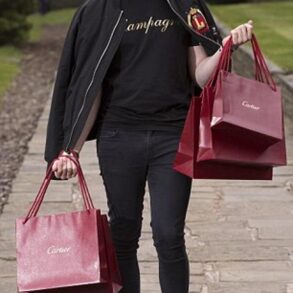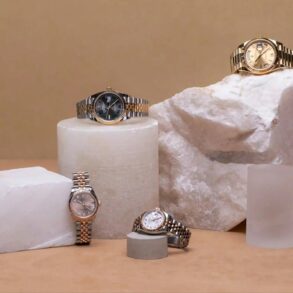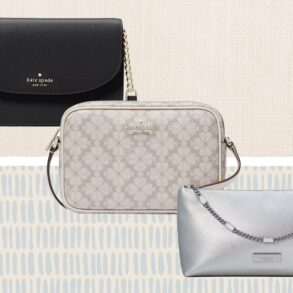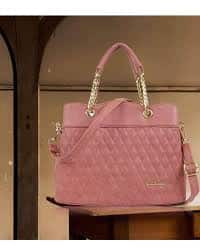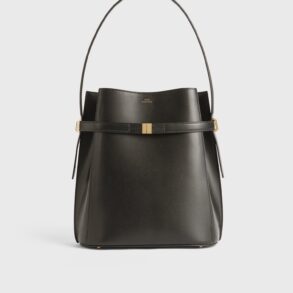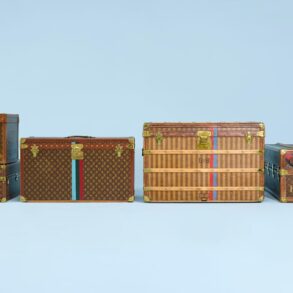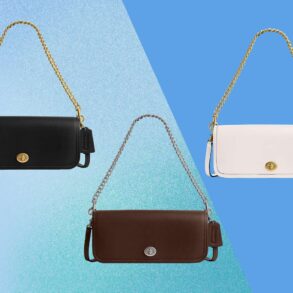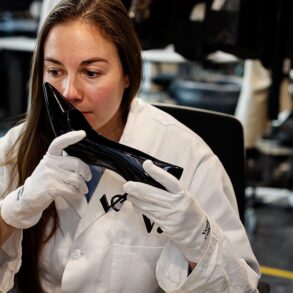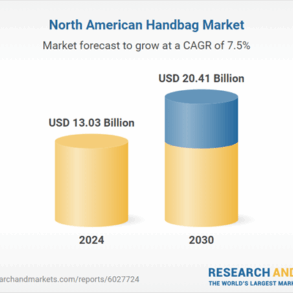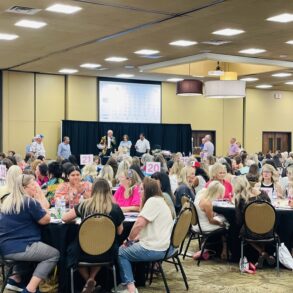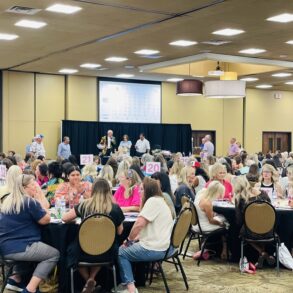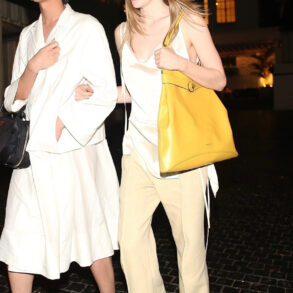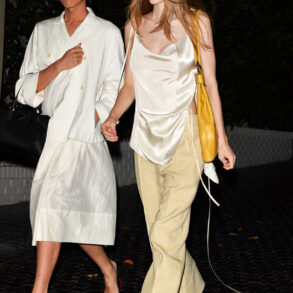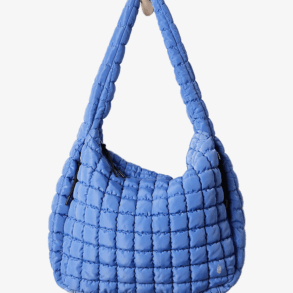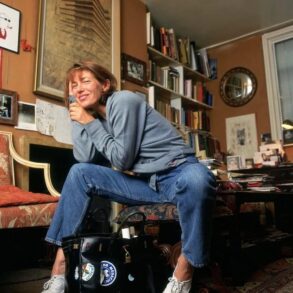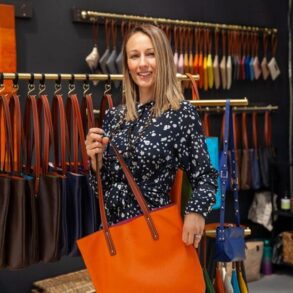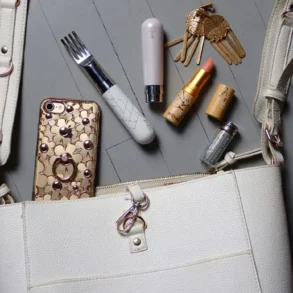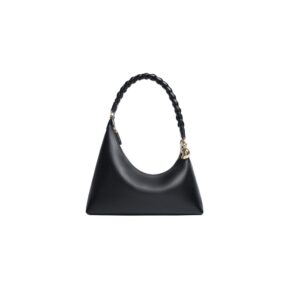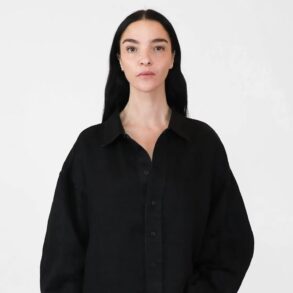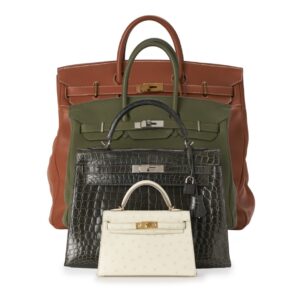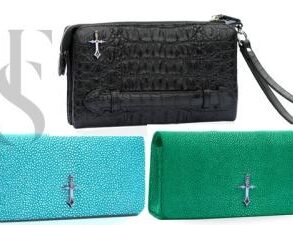In 1989, the science fiction author Ursula K. Le Guin published The Carrier Bag Theory of Fiction. In it, she notes that many stories depend heavily on a hero with a sword or weapon as a central object, while bags seem boring and insignificant.
Le Guin argued against the idea of weapons being the most important tool in a novel. Novels themselves are not “sword-shaped”, she suggested, but bags of ideas bundled together. It might be unexpected to link Le Guin to Tove Jansson’s Moomin stories. But Moominmamma is a perfect example of the kind of hero Le Guin was imagining.
The story Jansson tells in the first Moomin book, The Great Flood (1945), is not a conventional hero narrative. It is a bundle of experiences the Moomins encounter as they make their way through an uncertain environment. If the story functions more like the “bag” – of ideas, people, places and their relationships to each other – then the ideal object to sit at the heart of the story is a handbag.
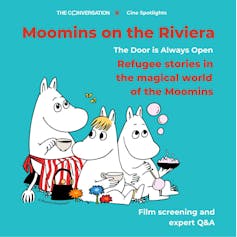
This is part of a series of articles celebrating the 80th anniversary of the Moomins. Want to celebrate their birthday with us? Join The Conversation and a group of experts on May 23 in Bradford for a screening of Moomins on the Riviera and a discussion of the refugee experience in Tove Jansson’s work. Click here for more information and tickets.
Moominmamma is, as children’s laureate Frank Cottrell-Boyce argues in his introduction to the 2024 edition of The Great Flood, the “hero” of the story in that she is often the person who drives the action forward. She approaches what appear to be dangerous situations with curiosity rather than fear. She rescues a cat and her kittens. She knocks on a door when she and Moomintroll are hungry and need help.
Heroes normally come with weapons, as Le Guin argues. But as a different kind of hero, Moominmamma comes with a handbag. She shows how it is possible to survive a long and arduous journey to find a home without a weapon, using her bag to carry and collect items to support them on their journey rather than relying on violence to negotiate with the world.
Le Guin remarks that it’s hard, but not impossible, to rise to the challenge of telling a story where the bag is the heroic object. With Moominmamma and her handbag in The Great Flood, Jansson fully rises to that challenge. Her courage, empathy and creativity encourage readers to think differently about how we live in the world and relate to others around us.
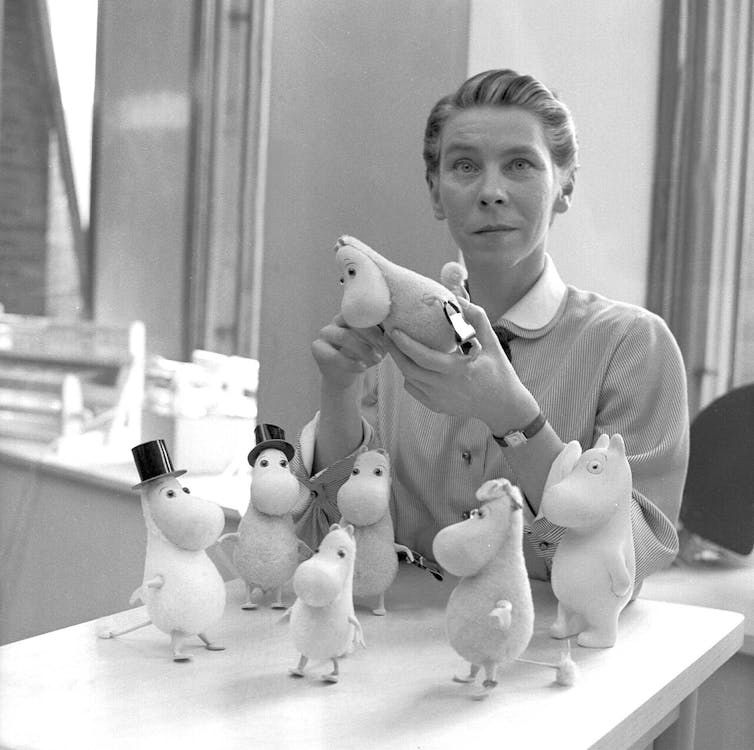
Wiki Commons
Moominmamma’s handbag is ubiquitous in Jansson’s illustrations. She carries it wherever she goes and panics when it goes missing.
The Exploits of Moominpappa (1950) depicts the first time Moominmama met her husband. She is introduced as she is washed up on shore, and her first worry is that she can’t find her handbag: “Suddenly, she sat up and cried: ‘Save my handbag! Oh, save my handbag!’”
In Finn Family Moomintroll (1948), the shy, elfish creatures Thingummy and Bob take the handbag and turn it into a home for themselves. The whole of Moominvalley is involved in the hunt to return the bag and a party is thrown once it is found. Moominmama is even shown to sleep with it under her pillow in A Comet in Moominvalley (1946).
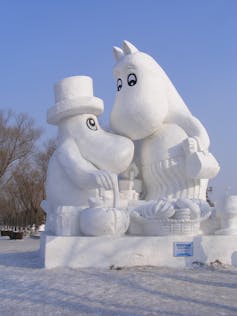
Wiki Commons, CC BY-SA
Moominmamma wasn’t drawn wearing her staple apron in the first few books, but the handbag has always been with her. In one comic strip, Moominpappa and Moomintroll know something must be seriously wrong when Moominmamma discards her bag before jumping into water.
In The Great Flood, it is even shown in the very first drawing as a small black square held by Moominmamma as she and Moomintroll enter the dark forest. They are on a terrible journey in a search for a home, and what could be more useful than a bag carrying all the essentials they need, and able to store new items picked up along the way?
The handbag’s many uses
The handbag’s first value is carrying items Moominmamma or anybody else may need on their perilous travels. It is almost immediately put to use in The Great Flood, when Moomintroll falls in water and, once rescued, has wet feet. Moominmamma gives him a pair of dry socks that symbolise the comfort and reassurance Moomintroll needs (even though Moomins do not actually wear socks).
When they discover a bottle with a message in it, she even has a corkscrew in the bag to open it. She also collects things in the environment that might be useful along the way, proving the value of a bag on a great journey is not only what you have when you start, but what you can gather.
Moominmamma is always on the lookout for potentially useful things, including some chocolate she gathers off-page when the Moomins and a character described as the “little creature” are exploring. Much later, the Moomins are starving and can only find a few figs to eat. Moominmamma takes out the chocolate to keep Moomintroll and the little creature going when they desperately need it.
Le Guin argued that novels can be thought of as bags of ideas, people and things bundled together and that literal bags can be just as useful in a crisis as a weapon. Moominmamma and her handbag are an ideal example of how this plays out. She is the alternative hero Le Guin imagined, and her bag is the bundle she uses as support, the most vital tool for a crisis or a long journey.

Looking for something good? Cut through the noise with a carefully curated selection of the latest releases, live events and exhibitions, straight to your inbox every fortnight, on Fridays. Sign up here.
This post was originally published on this site be sure to check out more of their content.



